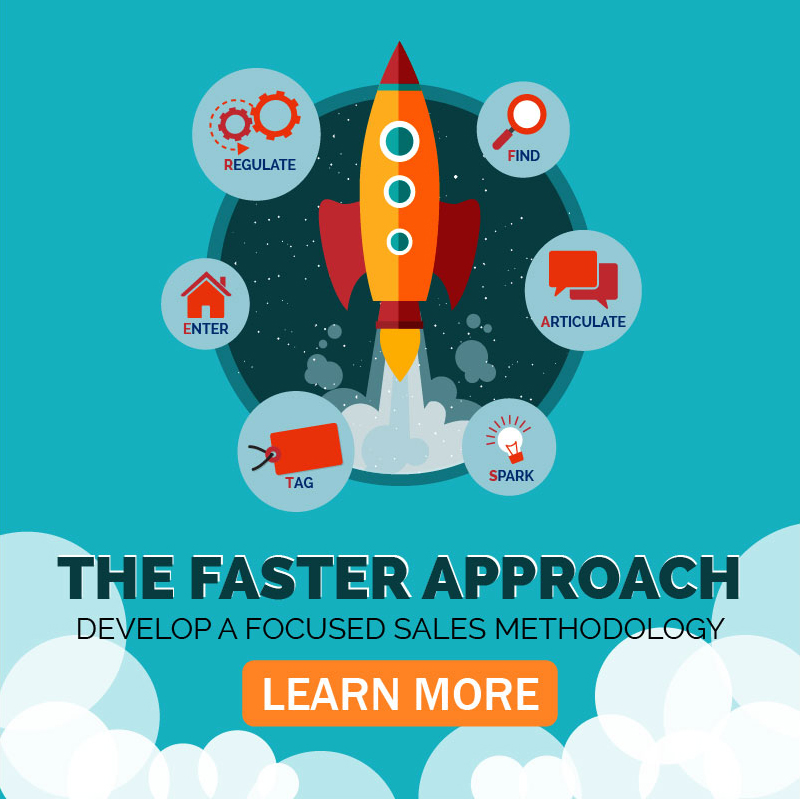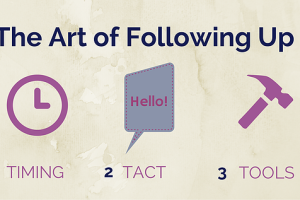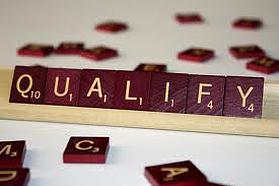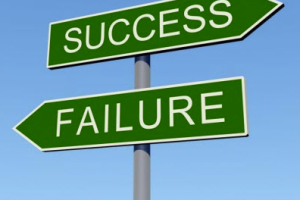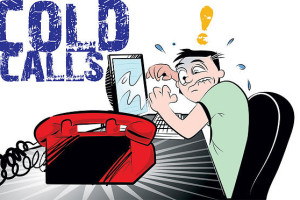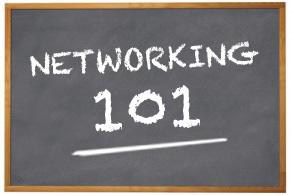How do we measure the efficiency of our sales process?
Is it just about the money we’re bringing home at the end of the day, or is there more to consider?
How can we be sure we’re getting the maximum return on our time and effort?
Smart salespeople know that, even when business seems to be going well, the answers to these kinds of questions determine whether we’re growing profitability or stuck in a holding pattern. It’s good for us to periodically step back and analyze our overall sales performance, but first we need to make sure we’re examining the correct metrics.
I’d like to reference the folks at the TAS Group who have a formula for generating a reliable snapshot of how much money we’re making and how fast we’re making it.
They call it the Sales Velocity Equation, and It reveals how sales velocity (or speed of sales) is really just a function of four key factors: (1) the number of deals we’re working, (2) the average value of each deal, (3) our sales win rate, and (4) the average time it takes for us to close on a deal. Donal Daly, CEO of the TAS Group, explains that growing sales requires us to work on improving all four factors in this equation simultaneously. We want to increase our number of deals, the average value of each deal, and our overall win rate—all while decreasing the length of our sales cycle. Improvements in two or more of these variables can exponentially enhance our sales returns.
Let’s take look. Imagine that we courted eight qualified prospects this past quarter, and we closed on five of those deals, the average value of which was around $3,600.
Let’s also estimate that we spent an average of three weeks working each prospect before either winning or losing the deal. Our sales velocity could be found by multiplying the number of opportunities we worked (8) by the average deal value ($3,600) by our win rate of 62.5% (5 out of 8), and then dividing all that by our sales cycle length (3 weeks).
Doing the math, we find that our sales velocity last quarter was $6,000 per week.
Now let’s experiment.
Let’s say we found a way to increase our win rate to 6 out of 8 next quarter while simultaneously shaving three days off our sales cycle. Working the same eight deals, with a 75% win rate over a 2.5 week sales cycle would result in a sales velocity of $8,640 per week (a 44% increase over the previous quarter).
Pretty impressive, right?
Unfortunately though, we it’s a mistake of paramount importance that we too often dump all of our resources into improving the first element of the equation while virtually ignoring the others. Meaning… the majority of sellers are focusing most of their time on getting more opportunities rather than trying to maximize the return from the opportunities they have. It’s not that scouting for new business opportunities is unimportant, of course. It’s just that there are other, equally effective ways to grow profitability.
Let’s talk about a few.
Increase your win rate.
Spending time and energy working a deal that fails to materialize wastes valuable resources. That’s why it’s important for us to aggressively qualify our leads before pursuing them. This means putting in time up-front researching prospective customers’ “pain points” and attempting to assess whether they can realistically afford to implement our solution. Even if this leads us to rule out a number of opportunities, we come out on top.
By determining (early in the sales process) those opportunities that you will not win, you are able to reduce additional effort that you would expend over a lengthy, arduous sales journey… Instead of chasing a lost opportunity, you will be able to prospect new clients and generate new business for your organization.
Once we’ve decided to pursue a lead, our ability to land the deal will depend in no small part on our skill and experience applying appropriate sales techniques, but it will also require us to develop a feedback mechanism.
I recommend regularly conducting a Win/Loss/No Decision analysis, creatively integrating customer feedback into the sales process itself in order to begin identifying which approaches are effective and which are time-wasters.
This may come in the form of a few in-person questions at the point of decision, for instance, or it might be a short email questionnaire. For buyers, we might ask, “Were there any aspects of the sales process that you feel could have been handled more effectively for your needs?” or “At what point did you know that our solution was the right one for you?” For non-buyers, we might ask, “Did we do an adequate job making sure we understood your needs?” or “What aspect of our solution failed to meet your expectations?” And for those who haven’t responded, a follow-up note might be appropriate to take one last shot: “We haven’t heard from you in awhile. If you are still considering our solution, can we provide any additional information to assist you in making the best choice for your needs?”
Increase your average deal size.
The more we take in at each sale, the fewer transactions we need to process in order to reach our goals. That’s why we should master the art of up-selling and cross-selling at the point of sale, when customers are most favorably disposed to buy. If we haven’t designed our solution to incorporate up-selling or cross-selling opportunities, then we’re missing out.
When we prompt customers to upgrade to more expensive “premium” versions of our solutions or to improve the functionality of their purchase by bundling other, complementary products into the mix, virtually every penny of the extra profit goes right to your bottom line because it requires no more time and effort, and there’s no additional cost of sale to reach the customer.
We do well to remember that once a customer has committed to buy, small additional costs will seem much less cumbersome if they promise a better implementation.
Another potential avenue for increasing our average deal is simply to charge more for the same product. Most people seem to charge less than what they are truly worth… If fear is holding you back from charging more, then build more value into your product or service.
It’s always tempting to sell ourselves short, but when we find ways to make our baseline solutions more valuable to our customers, they’re generally happy to pay a higher price for them—especially when the added value makes our solutions demonstrably superior to competitive offerings on the market.
Decrease your sales cycle.
This is probably the most important lever of sales velocity—the place where even modest advances make a tremendous impact. Anything we can do to shave off the amount of time it takes for us to reach the decision point with a customer helps free up more resources to pursue new opportunities.
Sometimes this will involve bringing greater clarity to the customer’s end of the buying process. In fact, customers frequently lack high-quality decision-making protocols and may face considerable uncertainty about the level of organizational change necessary for them implement our solutions.
That’s why it’s imperative that we develop well-structured, highly educational decision-making processes of our own that we can guide customers along step-by-step. This eliminates the need for customers to figure out the appropriate points to consider on their own and helps us avoid a premature pitch.
We can also take steps to reduce the administrative overhead involved in doing business with our customers on the back end of the deal. From my market research, few companies have moved to take advantage of electronic signatures in the decade since the Electronic Signatures in Global and National Commerce Act became law.
DocuSign… hint hint – can dramatically reduce the time and expense surrounding hand-written signatures, time-consuming faxes, and the physical presence or overnight shipping fees typically associated with manual signatures.
Closing a deal even a few days sooner as a result of instantaneous electronic signatures could dramatically improve a business’s sales velocity. If we’re clever, we can probably find dozens of similar opportunities to shortcut our administrative procedures.
As we funnel new business opportunities into the pipeline, paying attention to these easily overlooked elements of our sales process will compound our growth exponentially over time.
But as we work the math, let’s also remember to take the long view of our performance and apply consistent methods for collecting data. The longer period you analyze for the more accurate and balanced a picture your Sales Velocity Equation result will paint.
We must also beware of inadvertently applying different criteria from one period to the next. Once we determine what constitutes a qualified opportunity, the factors that play into the overall value of any given deal, and the point at which our sales process begins and ends, we have to stick with those definitions. Otherwise, it will be very difficult for us to meaningfully see where we’re improving and (even more importantly) where we still have work to do.
